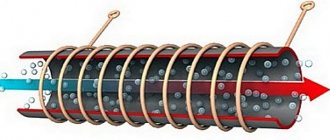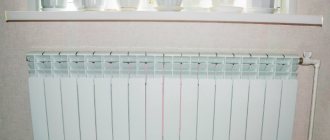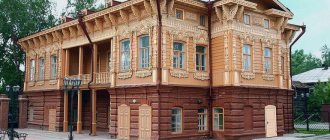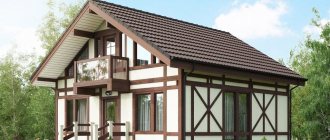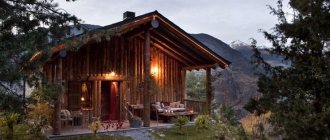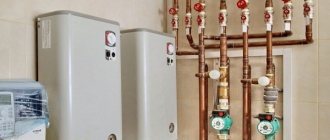Preservation of a house for the winter without heating is carried out when the construction of the building is not completed. This is the only way to continue construction work in the spring without significant losses.
It is worth noting that depending on the region in which construction is taking place, there will be more or less high requirements for the level of conservation. In some parts of the country there is almost no frost. Therefore, there is no need to worry about an unfinished house.
In addition, the warm winter allows construction to continue even in December. However, this does not happen everywhere. In some regions, the weather prevents work already in mid-autumn. Therefore, in order for the work not to be wasted, conservation of the house is required. There are many ways to prepare your home for winter. Much depends on what stage of construction the building is at, on the type of materials used to construct the walls and ceilings.
What is conservation of construction for the winter?
Many people who build houses in the fall begin to think about whether to stop work. If the weather permits, it is possible to continue construction in winter, but in most Russian regions this is not possible. Therefore, the process has to be stopped. But here the question arises as to whether it is necessary to preserve the unfinished building or whether you can simply leave everything as it is until better times.
It must be taken into account that work to prepare a building for winter requires material costs. You need to be prepared for this. In addition, depending on the stage of construction, the complexity of the work will differ.
When talking about conservation, it is necessary to remember that this is a necessary process that will preserve what workers have already achieved during construction. At the same time, if you preserve the construction of a house correctly, you can protect from destruction not only walls and partitions, but also equipment, as well as building materials that will be useful in further work. Having carried out a number of activities, you don’t have to worry about the building falling into disrepair by spring.
The concept of conservation includes careful treatment of walls, floors and ceilings, as well as other elements using special means. Some objects can simply be covered with film or special covers. Others have to be additionally processed with various liquid mixtures.
About fire hazard
The first thing that comes to mind before a long departure is that the house may burn down. Fire is possible from both external and internal sources.
The external source is grass, which when dried turns into good fuel. I had to leave in mid-August and I decided to completely rid the yard and surrounding area of grass, as well as prevent its further growth. To do this, I mowed it down and threw it away, and treated the yard and surrounding area with glyphosphates.
Internal sources of possible fire are gas and electricity. My wiring was done by a qualified electrician and I trust him. But with gas, we had to make a difficult choice - leave the house with the heating on and risk an explosion, or find less dangerous methods of heating the home. I chose the second and there is an explanation for this.
Even if we take into account that the boiler is new and technologically advanced, it still runs on electricity. In the private sector, there are often blackouts and this can lead to a failure in the boiler electronics. If you imagine that it turns off when there is a power outage and for some reason does not turn on, then the house will cool down with the onset of cold weather. When the joints of gas pipes in the boiler or hose connections cool, they may lose their tightness. According to the laws of physics, the metal will compress and its volume will decrease.
When narrowing, a gap may appear at the joints of the gas tubes, through which gas will leak under pressure. This is not so scary when someone is constantly at home, but if the gas accumulates indoors over a long period of time, the house will turn into a bomb. I’m not a gas engineer, and perhaps I made the wrong decision, but I disconnected the gas from the house by turning off the street tap. If you did something wrong, write in the comments.
What does conservation of house construction include?
The main requirement that every master must comply with is reliable protection of the unfinished project from moisture. For each element in construction, this moment is the most important, because in a few months moisture can turn walls and floor beams into a pile of stones that is unsuitable for further use.
This is explained by the fact that any area where moisture can penetrate will expand and collapse due to frost, which will prevent the construction from being completed in the future. Therefore, conservation is necessary, that is, some materials should be especially carefully treated to remove moisture and covered with special covers.
Preservation of a house under construction involves not only treating walls and ceilings with agents against moisture and fungus, but also carefully protecting communications, if they have already been installed. This work is especially painstaking and complex, but the procedure is mandatory.
Preparation for winter concerns not only the constructed building, but all materials that are not yet involved in the work.
Preservation of a frame house at the stage of roof construction
Frame houses have one good feature - they are quickly built. However, the weather may be too unpredictable and the craftsman will have to postpone the construction of the building for a while. If the house already has a roof, then preserving the frame house should not cause any difficulties. Otherwise, experts recommend making a temporary roof. To do this, rafters, sheathing and waterproofing, for example, roofing felt, are laid. Afterwards everything should be securely secured with slats.
The next stage will be the conservation of window and door openings. It is advisable to cover them with boards or metal sheets. Afterwards, you can use a special protective film that will protect the room from excess moisture.
In winter the weather can be different. In spring there is more moisture, so at the canning stage it is necessary to consider a drainage system. Otherwise, it is possible that flooding will begin when the snow melts. By preparing the grooves in advance, you don’t have to worry about a spring flood.
Conservation of the construction of houses made of timber and logs
These buildings are distinguished by the fact that a material such as wood can absorb large amounts of moisture. Often, when constructing a building from timber and logs, it is necessary to use a lot of different impregnations and moisture-proofing materials. Only after the work is completed will the house be completely protected from fungus and destruction.
If construction cannot be completed on time and winter is very close, the building should be properly preserved. At the same time, experts recommend not turning on the heating in the first winter immediately after construction. This will allow the building to stand properly. Despite the fact that the construction technology provides for keeping log houses in winter without heating, this does not mean that all conservation rules should be ignored.
The master must definitely start preparing the windows. They are covered with film or wooden slabs. If the building does not have a roof, it is impossible to do without a temporary roof during conservation. It should be made according to a standard scheme using waterproofing materials. It is necessary to install a temporary or permanent door in the doorways. This is required to ensure that the building does not warp during shrinkage. At the same time, experts recommend leaving small gaps for ventilation.
The walls themselves and all wooden elements of a wooden house must be treated with an antiseptic or other means against wood rotting. If building materials have been previously treated with the necessary preparations, antiseptics should not be reused. This will be an unnecessary waste of money.
It is recommended to seal seams and joints with tow. Do not forget that grooves for drainage should be laid near the house. This is especially useful when the snow begins to melt.
Protecting the roof from moisture
Water is the first enemy of wood. Exposure to high humidity causes wood materials to rot, promoting cracking and fungal attack. The maximum permissible humidity level for a log house is 60-65%.
To minimize the likelihood of moisture accumulation, the roof should be arranged correctly. The main task of the roof is to protect the log house from precipitation. Therefore, it is important to inspect the roofing outside and inside before the onset of cold weather. If damage or defects are found in individual elements, they should be replaced or repaired immediately. Inspecting the roof from the inside will help you detect rotten areas of the sheathing and take timely measures.
When inspecting your roof in the fall, you should clear it of accumulated debris and leaves, as they can retain moisture, contributing to the destruction of even the highest quality roofing materials.
Conservation of the construction of a brick and block house
Such buildings also require conservation. The degree of moisture protection required depends on what blocks were used to build the walls. For example, a gas block without a roof is extremely sensitive to moisture. Therefore, block walls should be covered with waterproofing material along the entire perimeter. This is necessary so that precipitation does not moisten the building too much, which will protect it from destruction.
Many conservation experts recommend treating blocks or bricks with antiseptics. For example, you can use water repellent Neogard or Aquastop. Silar is well suited for aerated concrete, brick and many other building materials. Aerated concrete and artificial mineral stone will help protect Penta 820.
In addition, there are many other high-quality products that can be used to preserve an unfinished house made of aerated concrete, brick or blocks. The use of an antiseptic is recommended when preserving construction at any stage.
Preservation of the construction of panel houses
Such buildings are erected quickly. Nevertheless, for various reasons, construction sometimes has to be suspended. Preservation of houses made of sip panels is standard. What has already been built must be protected from moisture and mold. For this purpose, waterproofing materials and special antiseptics are used.
If only the walls have been erected in the house, the roof must be laid out before conservation. It must be covered with roofing felt or other material that can protect the building from bad weather.
Water supply, sewerage
Keeping the water supply system in good condition in cold weather is much more difficult. The first step is to turn off the water, but it will still remain in the connections, taps and equipment, which will inevitably lead to damage to the system. Repairs will be very expensive, it is better to protect yourself in advance. It is necessary to call professionals who will blow out the water supply and remove any remaining liquid. You can add anti-freeze liquid to the sink and toilet, but you cannot be one hundred percent sure of the result.
The correct approach to keeping the system in order is to insulate the pipes. First, take care of those that are buried in the ground on your site. They can be heated using an electric wire. The pipes are wrapped with wire or laid together in a single box. For greater reliability, lay two heating wires to one pipe.
Preservation of building materials in winter
At any stage of construction, there may be materials on site that will find it difficult to withstand a harsh winter. Therefore, you should use the recommendations of specialists to eliminate the possibility of damage.
Lumber is stored in stacks. Roofing and waterproofing materials should be folded under the roof or covered with film. It is important that they are kept in a dry place. All paints and antiseptics should be tightly closed. Otherwise, they will dry out or erode, after which they will become unsuitable for further use. Bulk materials such as cement, alabaster and lime should be removed from the street. They must be stored under special conditions. It is advisable that the room is not too cold and dry.
How to monitor your heating system in summer
In the summer, you need to remove the coolant from it, or, more simply, drain the water.
In an unfilled system, the quality of pipes and batteries, the reliability of connections and the degree of contamination of the system are checked. In warm weather, it is easier to eliminate all possible faults in order to avoid various unnecessary problems in winter, when uninterrupted operation of the heating system is necessary.
After draining the water, flush the system until the water supplied to the inlet becomes light and clean, once you have achieved this effect, you can fill the system. The boiler also needs to be inspected annually, be sure to inspect the heating elements in them, if necessary, they need to be cleaned, check the contacts in the starting box, they must be polished, loosen the wire connections and tighten them again so that there are no poorly functioning connections.
If you have a gas boiler, then it is better to have the maintenance carried out by specialists who installed it and are certified to work with gas appliances. They must check the quality of the connections on the communications; at home this can be done with soap foam if you apply it to the area where the pipes are connected; you also need to look at the chimney, burner and the functioning of the ignition system.
Even if the boiler is out of warranty, you cannot disconnect the gas communications and clean the burner yourself. If you are carrying out maintenance on a solid fuel boiler, then you need to clean the firebox, pyrolysis chamber and chimney.
All this work can be carried out using a special metal brush; you should be left with a minimum of soot and deposits so that the system is as clean as possible. Of course, the heating does not work in the summer, but it is necessary to prepare for winter.
After washing, small leaks will remain in it, which were previously clogged with scale or corrosive chips; after washing, test the system with increased water pressure, that is, you need to carry out pressure testing.
The system must be put under pressure up to 0.6 MPa, the pressure pumped by the pump must be maintained for at least 20 minutes, during which time the condition of the pipes is checked and the stability of the pressure sensor readings in the system is analyzed. If the readings have changed by less than 0.01 MPa, then the system is operating normally and is sealed.
In most systems, heating occurs by heating water, this is the main coolant, it must be as clean as possible, ordinary tap water is hard, it contains many impurities, so it accelerates corrosion in pipes and heating radiators.
It is always better to use the most purified water possible, rainwater is a good option, filtered melt water is also suitable, sometimes boiled water or water softened with special inhibitors is used.
If you take this work as responsibly as possible and entrust it to professional specialists, then no matter the winter temperature, your home will be warm and cozy.
